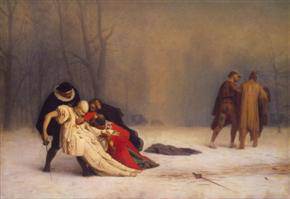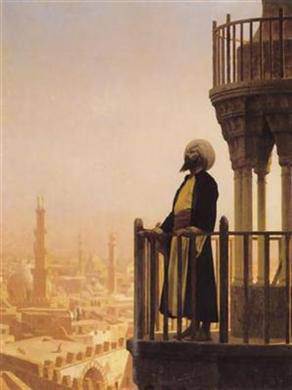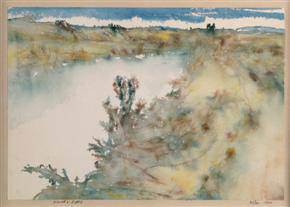
Jean-Léon Gérôme
French, 1824–1904
The Duel After the Masquerade, 1857–1859
Oil on canvas
Unframed: 39.1 x 56.3 cm (15 3/8 x 22 3/16 in.)
Walters Art Museum, Baltimore, Maryland, 37.51
EX.2010.2.30

Jean-Léon Gérôme
French, 1824–1904
The Muezzin, 1866
Oil on canvas
Unframed: 81.3 x 64.8 cm (32 x 25 1/2 in.)
Gift of Francis T.B. Martin (bequest), Joslyn Art Museum, Omaha,
Nebraska, JAM 1995.37
EX.2010.2.53
The Spectacular Art of Jean-Léon Gérôme Organized by the J. Paul Getty Museum, Los Angeles; the Musée d’Orsay, Paris, and the Réunion des musées nationaux, Paris, in association with the Thyssen-Bornemisza Museum, Madrid, ‘The Spectacular Art of Jean-Léon Gérôme’ is the first major, comprehensive exhibition of the artist’s work in nearly 40 yearsption
At the J. Paul Getty Museum, Getty Center
June 15 – September 12, 2010
At the Musée d’Orsay, Paris
October 18, 2010 – January 23, 2011
At the Thyssen-Bornemisza Museum, Madrid
March 22 – June 12, 2011
]]>
Source: Getty Museum, California
Jean-Léon Gérôme (1824–1904) enjoyed the heights of artistic and commercial success in the second half of the 19th-century as a powerful academician and respected professor at the École des Beaux-Arts in Paris; however, with the eventual triumph of Impressionism, post-Impressionism, and the modernist avant-garde—which defined itself against establishment figures like Gérôme—his reputation suffered greatly in the early 20th-century.
The Spectacular Art of Jean-Léon Gérôme will trace the artist’s career thematically and chronologically. The exhibition will address Gérôme’s imaginative use of antique themes and sources, his inventive strategies as a history and genre painter, his complex relationship to Orientalism, and his contribution to the history of sculpture. The exhibition will simultaneously consider his productive engagement with photography and the legacy of his art in early 20th-century cinema.
Gérôme’s artistic career began in the studio of Paul Delaroche in Paris in the 1840s and he accompanied the master to Italy to continue his studies. He returned to Paris and attended the École des Beaux-Arts, entering the Prix de Rome competition in hopes of returning to Italy, but he failed to qualify for the final stage in 1846 because of his inadequate figure drawing. Consequently, Gérôme became obsessed with painting the perfect nude—an ambition he would harbor throughout his life.
For the Salon of 1847, he submitted The Cockfight (1846; Musée du Louvre), which featured two scantily-clad adolescents and two fighting cocks in an idyllic classical landscape. The picture received great acclaim because he used a refined, classicizing manner to depict a witty, light-hearted scene about adolescent sexuality on the grand scale of serious history painting. The novelty and appeal of such accessible genre scenes
Throughout his career, Gérôme was inspired by antique sculpture and he was a staunch proponent of an academic style based on the mastery of the human figure, so it comes as no surprise that he refocused his attentions from painting to sculpture in his later years. He debuted his first sculpture at the Universal Exposition of 1878, exhibiting a large bronze gladiator trampling on his victim, a figure extracted from his painting Pollice verso (1872, Phoenix Art Museum, illustrated on page 1). Inspired by the discoveries of modern archeology, he would go on to experiment actively with polychromy and mixed-media, producing works that ranged from full-scale, tinted marbles to small bronze and ivory statuettes. He enjoyed cross-referencing his painting and sculpture, painting himself, for instance, as a sculptor in his studio at work on one of his statues. He also mythologized his role as sculptor in paintings like Pygmalion and Galatea (1890; The Metropolitan Museum of Art), which refers to the ancient Roman myth about a sculptor who fell in love with his own creation and succeeded in bringing her to life through the intervention of a goddess.
Follow us on:

